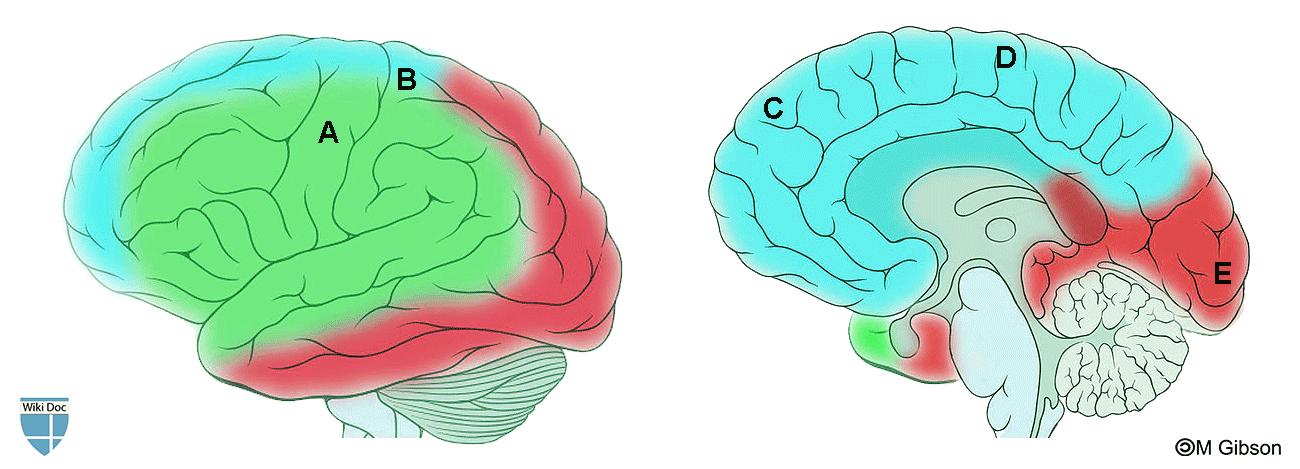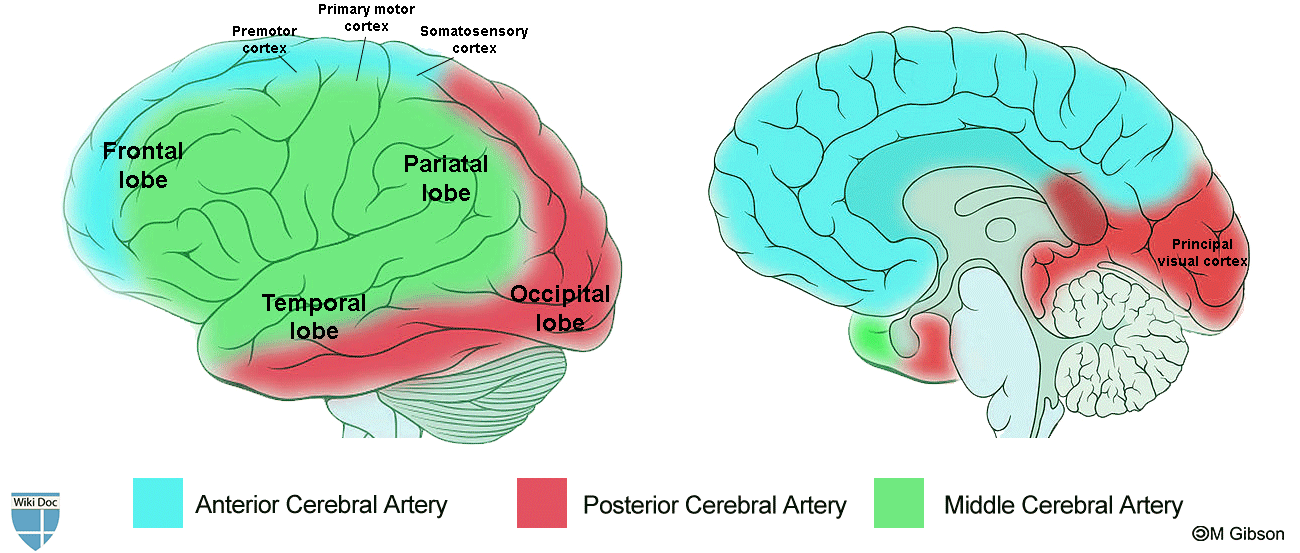WBR0614
| Author | [[PageAuthor::Rim Halaby, M.D. [1]]] |
|---|---|
| Exam Type | ExamType::USMLE Step 1 |
| Main Category | MainCategory::Anatomy, MainCategory::Pathophysiology |
| Sub Category | SubCategory::Neurology |
| Prompt | [[Prompt::A 72-year-old male patient with previous medical history of diabetes and hypertension presents to the emergency department for an acute onset of left leg paralysis. The patient tells the physician that he woke up in the morning and was not able to lift his left leg up. Physical exam reveals paralysis and loss of sensation in the left leg with intact motion and sensation in the upper extremities and right lower leg. The cranial nerves and cerebellar exam are normal. Stroke in which of the following areas may explain the symptoms of the patient?
 |
| Answer A | AnswerA::A |
| Answer A Explanation | [[AnswerAExp::A represents the primary motor cortex on the lateral side of the brain. This area is supplied by the middle cerebral artery and its function is to control the motor activity of the upper extremities, hands and face but not the lower extremities.]] |
| Answer B | AnswerB::B |
| Answer B Explanation | AnswerBExp::B represents the somatosensory cortex which is the main sensory receptive area for the sense of touch. Like other sensory areas, there is a map of sensory space in this location corresponding to the sensory homunculus. |
| Answer C | AnswerC::C |
| Answer C Explanation | [[AnswerCExp::C represents the prefrontal cortex is the anterior part of the frontal lobes of the brain. This area is responsible cognitive behavior, personality expression, decision making, and moderating social behavior. Lesions in this area lead to personality changes and disinhibitory behaviors.]] |
| Answer D | AnswerD::D |
| Answer D Explanation | [[AnswerDExp::D represents the primary motor cortex on the medial side of the brain. This area is supplied by the anterior cerebral artery and its function is to control the motor activity of the lower extremities.]] |
| Answer E | AnswerE::E |
| Answer E Explanation | [[AnswerEExp::E represents the primary visual cortex which is supplied by the posterior cerebral artery (PCA) and is responsible for vision.]] |
| Right Answer | RightAnswer::D |
| Explanation | [[Explanation::The cerebral cortex functions are specific to each area of the brain. The primary motor cortex is located in the posterior portion of the frontal lobe. It works in association with other motor areas including premotor cortex, the supplementary motor area, posterior parietal cortex, and several subcortical brain regions, to plan and execute movements. There is a map of motor space in the primary motor cortex corresponding to the motor homunculus. Branches of the middle cerebral artery (MCA) provide most of the arterial blood supply for the primary motor cortex. The medial aspect that controls the lower extremities is supplied by branches of the anterior cerebral artery (ACA). The patient in the question is unable to move his left leg; hence, the most likely area affected is the primary motor cortex on the medial side of the right lobe.
Shown below is an image depicting the cerebral cortex functions.  Educational objective: The primary motor cortex controls motor activity, the lateral area supplied by the MCA controls the upper extremities, while the medial area supplied by the ACA controls the motor activity of the lower extremities. |
| Approved | Approved::No |
| Keyword | WBRKeyword::Primary motor cortex, WBRKeyword::ACA, WBRKeyword::hemiplegia |
| Linked Question | Linked:: |
| Order in Linked Questions | LinkedOrder:: |